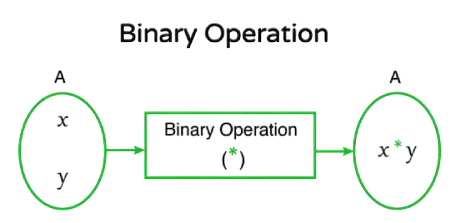Binary Calculator
Perform binary to decimal conversions and basic operations online.
Converter
📋How to Use Binary Calculator?
-
Choose operation: convert, add, subtract, multiply, or divide.
-
Enter binary numbers in the input fields.
-
Click Calculate to view results and explanations.
The binary calculator makes it easy to work with a base-2 number system by leveraging the tool's ability to quickly convert and perform mathematical operations. To begin using the calculator, you will want to create a starting function, such as binary-to-decimal conversion or binary addition. To convert a number, simply input your binary number in the designated box (note, your input must comply with the binary number system and include only 0s and 1s and of course without any additional characters). The tool will allow you to convert your value to the output format, such as decimal.
You will click the calculate button and in that instant your converted number will show along with additional detail, such as its place value to confirm your converted number. If you are performing mathematical operations, like binary subtraction or binary multiplication for example, you will input your two binary numbers in two fields, and selected your method to require the binary calculator or tool to compute an answer for you. Generally, when performing operations, the tool manages addition and subtraction standard standards of using carry-overs for both addition and borrowing for subtraction.
This approach mirrors decimal methods but adapts to the binary systems limitations with just two digits. Results include step-by-step breakdowns where helpful, aiding understanding of how each bit contributes to the final value.
Useful Tips💡
-
Pad shorter binary inputs with leading zeros for alignment in operations.
-
Double-check inputs for only 0s and 1s to prevent calculation errors.
How Binary Calculations Work
Binary calculations are based in base-2 arithmetic where every position in the binary system represents a power of 2. When converting to decimal, you take the value of 1 bits and multiply by its positional power, so 101 in binary translates into 5 decimal (4+0+1). When you add to binary, the carrying occurs at 2 and in subtraction, you borrow when subtracting 1 from 0, which turns into 10 binary, then subtract 1 again. When multiplying, you shift over to position the decimal and add all the partial products together. Division is done through repeated subtraction, similar to long division. These examples work with digital logic and are reinforced by IEEE and computer science textbooks like Knuth's The Art of Computer Programming. If you want more detail about the floating-point standards from the IEEE regarding binary, see ieee.org.
Practical Applications📊
-
Verify binary code in programming and debugging scripts.
-
Support learning digital electronics and logic gate designs.
-
Aid in data analysis for computer science coursework, including 2025 quantum simulations.
Questions and Answers
What is a binary calculator?
A binary calculator is a device used to perform base-2 number conversions and binary, addition and subtraction which is useful in technology and computer systems.
How does binary to decimal conversion work?
To convert binary to decimal, add the powers of two for each position of the 1s. It is an easy way to convert binary numbers into decimals which are more commonly used.
Why use a binary addition calculator?
A binary addition calculator makes adding binary base-2 numbers easy by performing the adds and handling carries automatically, thus minimizing the risk of error in manually computing binary sums for engineering and hi-tech applications.
Can I perform binary subtraction online?
Indeed, online binary subtraction tools automatically apply borrowing rules found in abstract binary computation, yielding accurate results for binary subtracted operand operands, respectively.
What about binary multiplication and division?
Multiplying binary numbers is accomplished through addition and shifting, while division is carried out through successive subtractions. In either case, the operations can be calculated quickly enough to assist in calculating binary for precision, if necessary.
How often should developers use a binary converter?
Programmers benefit from using their binary converter regularly during code reviews, or when working with hardware, leading to fast and efficient data transfer that doesn't second guess cross number system representation.
What formulas are used in the Binary Calculator?
The binary calculator employs standard formulas: decimal to binary via successive division by 2 with remainders; binary to decimal as sum of 2^n for 1 bits; addition/subtraction per bitwise rules with carry/borrow; multiplication via partial shifts; division by long method. These are verified by IEEE 754 standards and texts like Knuths The Art of Computer Programming, ensuring reliability for educational and professional binary operations. At CalcMate, this implementation prioritizes accuracy in base-2 computations.


